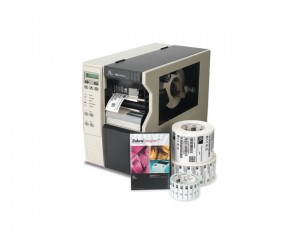The L-Tron team recently received a blog comment from Eef de Ferrante, Director of the Active & Intelligent Packaging Industry Association (aipia.info), reminding us that item-level tracking systems are often best coordinated at the production end of the supply chain. Said Eef:
“Let’s not forget that barcodes, tags, labels, and indicators are initially a subject for packaging companies. That’s where it all starts… We believe that intelligent labeling starts at the beginning of the supply chain (the brand owner) and that this intelligence must be used in every part of the supply chain.”
Eef makes an important point, and one that’s especially timely here in light of our more recent blog article that wrestles with aspects of just this subject – End-To-End, Item-Level Tracking?, which fell into the trap of considering the issue from the peculiar viewpoint of the retail stage of a product’s travels, when, as Eef suggests, it is often the perspective of the brand owner that is most representative of the cumulative interests of all entities involved in the supply chain. Indeed, who benefits more from optimum efficiency in movement of goods from producer to consumer than the brand owner?
Barcode technology has been with us for so long and become so ubiquitous that it’s easy to think of printed barcodes as distinct in function from newer ID/tracking technologies, such as RFID and RTLS. But, whether the subject is printed barcodes or RFID and RTLS tags, it’s reasonable to assume that the same dynamics that drove end-to-end ubiquity of printed barcodes are also operable when products justify RFID or RTLS tags.
I look around my office and see few items that aren’t identified by a printed barcode. There’s one on the label glued to the bottle of water I’ve been sipping on all morning and another on the case sleeve it was shipped in. There are two on the bottom of my keyboard and two more on the back of the computer monitor, plus more on the display boxes they arrived in. There’s one on the cover that binds the ream of printer paper I keep on hand and another on the 10-ream box in which it was delivered.
What do all of these printed barcodes have in common? They were put there at the direction of the owner/producer of each product brand. Why? Because it was in each brand owner’s economic interest to do so. It is simply more cost effective for a brand owner to apply a printed barcode during production or packaging than for downstream distributors and retailers to each apply their own, and it was in the brand owner’s interest to facilitate optimum efficiency in movement of its products through the supply chain to the ultimate consumer.
These factors are equally at play whether the ID/tracking technology is a printed barcode or a passive or active RFID/RTLS tag. So, when the nature of the product justifies RFID or RTLS tagging, the case for coordinated, end-to-end, item-level RFID/RTLS tracking has already been made and proven by the overwhelming end-to-end, item-level success of the most thoroughly implemented model available to us: the printed barcode.
So, yes, it behooves brand owners to take the lead in coordinating the design and implementation of any ID/tracking system, including RFID and RTLS, for the benefit of all players in the supply chain that ultimately moves their products to the consumers. And to better aid brand owners in doing so, the L-Tron team is fortunate to have industry leader Zebra Technologies as a solution partner. Zebra’s core technologies include hardware and software solutions to satisfy all ID/tracking requirements within your product supply chain.













